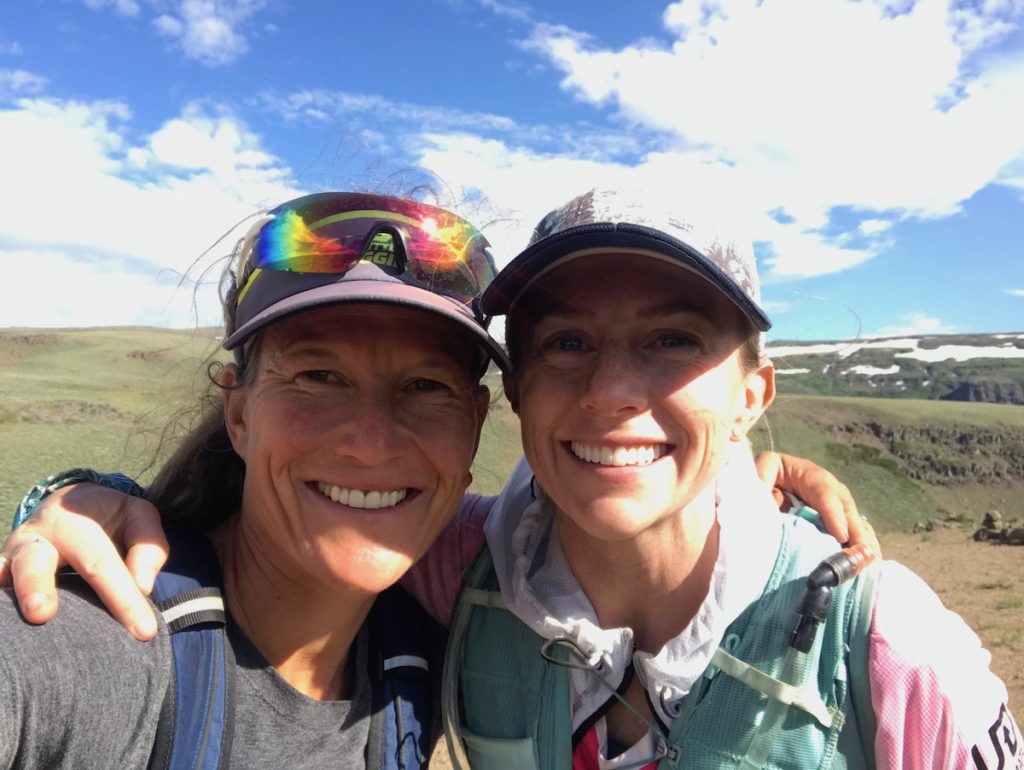Girls Running, Melody Fairchild and Elizabeth Carey’s new book on all things running for young female runners, is the manual I wish I’d had in high school.
Remember running in high school? Remember the days of pretty much always being hungry but not wanting to go back for seconds around your skinny peers? Remember trying to balance your athletic ambitions with all that homework, other commitments, and a social life? How about solving small puzzles, like what to eat before a track meet, or big puzzles, like how to handle your period (or not getting your period at all)?
My high school-aged self had to rely on Runner’s World (a publication not at all targeted toward adolescent female runners but one that not-so-helpfully featured models in running clothes on its covers) and the guidance of coaches who were sometimes well-intended and well-informed but rarely both and sometimes neither. In welcome and stark contrast, Fairchild and Carey provide a comprehensive guide for the young female runner that offers this healthy context for running from its earliest lines: “Running invites us to practice for our longest race—life!”

The book overflows with practical tips for young runners, but it is perhaps its overarching outlook on running and life that I most hope young readers heed. Fairchild and Carey emphasize self-acceptance and embracing all aspects of the running journey, both the perceived challenges and perceived successes. They write, “Your journey hinges on the attempt, not the end result. Medals are nice and shiny, but running is most potent when it is about more than prizes. Stick with it and you’ll see—the process of running opens doors to new places and greater understanding time and again.” In the hyper-metric-focused environment of many high school running programs and the comparison-inundated world that teens inhabit today, this message of self-compassion and taking the long view is perhaps the single most important aspect of a very important book.
The book also imparts training advice in keeping with this view of self-compassion and self-acceptance, advice that makes for life-long runners instead of burned-out, overtrained young adult athletes. Fairchild and Carey explain a training truth that’s difficult for runners of all ages to grasp: “When it comes to training, this much is crystal clear: Progress results from a combination of work and rest.” The authors preach listening to one’s body (what an idea!) and remind readers that there is no one perfect training plan for everyone.
Girls Running includes an overview of our bodies’ biological systems and detailed explanations of puberty and the menstrual cycle. The authors do a great job handling this subject, one that can define so many female athletes’ lives. They admonish their readers that getting a period is something to embrace (it means your body is working!), not fear, and that a runner will be stronger for working with her body instead of fighting a natural process. This science-based message is a welcome and critical departure from the dangerous mentality prevalent among female runners that not having a period is somehow a badge of honor.

The book discusses all things food: specifically, that our bodies need it! As Fairchild and Carey write, “Every body is different, and it’s very hard to tell whether some is ‘healthy’ by looking at them.” The authors write about the importance of fueling sufficiently and about disordered eating, offering advice on what to do if a runner or her teammate needs help. They also address low energy availability (LEA) and Relative Energy Deficiency in Sport (RED-S), medical issues especially common among young female runners. It’s incredibly refreshing to see the authors emphatically state what so many runners need to hear: insufficient eating and overtraining do not make for healthier runners and instead can cause major health problems.
Young readers can know they’re learning from experts who have been in their running shoes. Fairchild, a record-setting high school athlete and current professional runner, shares first-person anecdotes about her own experiences, including painful lessons she learned along her running journey. Carey draws on her experience as a competitive runner and coach who has competed and coached at the Division I level.
The authors discuss mindset-related and mental health topics like a growth mindset, mindfulness, and mental illness. Writing prompts at the end of each chapter, along with guidance on journaling, encourage self-reflection. A few topics in the book seem a bit oversimplified, like the explanation of mindfulness or the descriptions of our bodies’ various systems. But ultimately, the authors balance keeping the book friendly toward a teen audience with explaining very complicated topics. The authors clearly write for teens, using some abbreviations and references that make even a thirty-something feel old. Yet even while writing for this audience, Fairchild and Carey keep the information scientific and accurate and reference experts, like registered dieticians and MDs.

One note on the book’s intended audience: the authors clarify their use of gendered language in their introduction, writing, “In this book, we’ll use the words female, girls, and women and discuss binary sports divisions, but we welcome all readers.” I appreciate this line, and certainly runners of all ages and genders can benefit from this book.
Ultimately, here’s how I can most accurately convey my thoughts on the book: buy and give a copy to every young female runner (and her coach) you know. I’m grateful to Fairchild and Carey for speaking truth to young athletes and advocating for the health of the next generation of runners.
To get a copy of Girls Running, check with your independent local bookstore or you can order from one of these links: BookShop.org , Elizabeth’s site , or VeloPress.
















One Response
Thank you for writing this review. What age ranges would you recommend this book for?